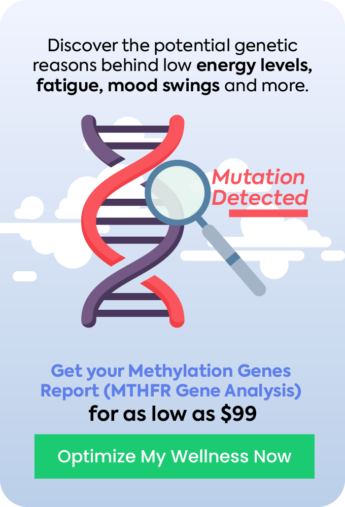D-Bifunctional Protein Deficiency (D-BPD), also known as peroxisomal D-bifunctional protein (D-BP) deficiency, is a rare genetic disorder that affects the body’s ability to break down certain fatty acids; the so-called “D” shaped fatty acids and other compounds.
Our bodies use the D-bifunctional protein to break down very long-chain fatty acids, which are types of fats. Think of these enzymes as specialized scissors that only cut molecules with a particular shape. The “D” shape, that the D-BP cuts, is one specific way the fatty acid can be arranged.
D-BPD falls under a broader category of peroxisomal disorders—diseases that impact the function of peroxisomes. Peroxisomes are tiny, bubble-like structures found in most cells that help break down and detoxify various substances. They play a key role in breaking down long fatty acids and converting them into energy that the body can use. This process is called beta-oxidation.
Peroxisomes also help neutralize harmful chemicals and protect the cell from damage. Without properly functioning peroxisomes, harmful substances can build up in the body, leading to various health problems, particularly in the brain and liver.
D-BPD is a particularly severe disorder, often leading to early developmental issues, and in most cases, significant neurological impairment and other life-threatening complications. The condition is typically diagnosed in infancy or early childhood.
Types of D-BPD
There are two main types of D-BPD, classified based on the degree of enzyme deficiency:
- Type 1 (Complete deficiency): This form results in a total loss of enzyme function, leading to severe symptoms that present shortly after birth. Type 1 is often fatal in early childhood.
- Type 2 (Partial deficiency): In this form, some enzyme function is retained, leading to a less severe but still life-threatening progression of the disease. Children with Type 2 may live longer but will still experience significant neurological and physical challenges.
Genetics of D-Bifunctional Protein Deficiency
HSD17B4 Gene
The HSD17B4 gene encodes the Homo sapiens hydroxysteroid 17-beta dehydrogenase; the D-Bifunctional Protein (D-BP, which is essential for the peroxisomal beta-oxidation of very long-chain fatty acids and other lipids. D-BP contains two key enzymatic activities: enoyl-CoA hydratase and 3-hydroxyacyl-CoA dehydrogenase, both of which are crucial for breaking down fatty acid chains.
Mutations or variations in HSD17B4 gene can disrupt these enzymatic functions, leading to the accumulation of toxic fatty acids and severe metabolic disorders. It can also cause a spectrum of symptoms including neurological impairment, intellectual decline, hearing loss, and other metabolic issues. Depending on the nature of the mutation, the disease severity can vary, from life-threatening in infancy to milder forms with adult onset.
Inheritance
D-BPD is an autosomal recessive disorder. This means that parents of an affected child must carry one copy of the mutated HSD17B4 gene. Genetic counseling is recommended for families with a history of D-BPD or those who have a child diagnosed with the condition. Carrier testing and prenatal diagnosis are available for families who wish to assess the risk of passing the disorder to future children.
Research and Future Directions
Ongoing research into peroxisomal disorders like D-BPD aims to better understand the metabolic pathways affected by these conditions and explore potential therapeutic options. Gene therapy, enzyme replacement therapy, and small-molecule therapies are areas of investigation that hold promise for future treatments.
A 2021 case report described the first documented case of neonatal D-BPD in a Chinese newborn, presenting with symptoms shortly after birth. Genetic analysis using whole-exome sequencing identified two previously unreported pathogenic mutations: c.972+1G>T on the paternal allele and c.727T>A (p.W243R) on the maternal allele. These heterozygous mutations in the HSD17B4 gene confirmed the diagnosis of D-BPD. This discovery provides new insights into the genetic basis of this disorder and opens avenues for future research.
A remarkable 2024 case report to be published in the December 2024 printed issue of Molecular Genetics and Metabolism Reports offers new hope for patients with DBP deficiency. In this case, an infant was diagnosed with DBP deficiency after elevated levels of lysophosphatidylcholine—a marker of abnormal fatty acid metabolism—were detected during routine newborn screening. Genetic testing confirmed the diagnosis, revealing a homozygous HSD17B4 mutation (c.1041T>A, p.Tyr347Ter)- a nonsense mutation.
A nonsense mutation is a change in the DNA that creates a stop signal too early, causing the protein to be incomplete and non-functional. In an effort to manage the disease, doctors initiated an experimental treatment at six months using PTC124 (ataluren), designed to “read through” the nonsense mutation in a gene and allow the body to produce a functional version of the DBP protein.
Over the course of the two-year treatment period, the infant showed remarkable improvement, including better swallowing ability and steady progress in motor and speech development. Importantly, the seizures did not recur during this time.
Symptoms and Clinical Presentation
Symptoms of D-BPD typically appear soon after birth. The severity and specific symptoms can vary depending on the degree of enzyme deficiency, but common signs include:
- Neurological impairment: Infants may exhibit poor muscle tone (hypotonia), seizures, developmental delays, and feeding difficulties. Over time, these issues can progress to severe intellectual disability.
- Hearing and vision loss: Many children with D-BPD experience hearing impairments and vision problems, often as a result of damage to the optic nerve.
- Liver dysfunction: Some infants show signs of liver disease, such as jaundice and an enlarged liver.
- Failure to thrive: Due to feeding difficulties and metabolic issues, affected children often struggle to gain weight and grow as expected.
- Distinctive facial features: In some cases, children may have dysmorphic features such as a broad forehead or an unusually shaped head, though this is less common.
Diagnosis
D-BPD is diagnosed through a combination of clinical symptoms, biochemical tests, and genetic testing. Laboratory tests can reveal elevated levels of very long-chain fatty acids and other compounds that accumulate in the blood due to the dysfunctional peroxisomal beta-oxidation process. Genetic testing is used to confirm the presence of mutations in the HSD17B4 gene, which provides a definitive diagnosis.
Treatment
Currently, there is no cure for D-BPD. Treatment focuses on managing symptoms and improving the quality of life for affected children. This may involve:
- Seizure management: Anti-epileptic drugs can help control seizures, although they may be difficult to manage.
- Nutritional support: Infants with feeding difficulties may require feeding tubes or specialized nutrition plans to ensure proper growth and development.
- Physical and occupational therapy: To support motor development and manage muscle tone issues, children may benefit from therapy to improve movement and physical functioning.
- Hearing and vision aids: Assistive devices such as hearing aids or eyeglasses may help mitigate sensory loss, although the extent of improvement can vary.
The prognosis for individuals with D-BPD remains poor, particularly for those with the more severe form (Type 1). Most children with complete enzyme deficiency do not survive past early childhood, while those with partial deficiency may live longer but with significant disabilities.
Takeaway
D-BPD is a rare metabolic disorder that affects the body’s ability to break down certain fatty acids, leading to severe neurological and physical impairments.
While treatment options are currently limited to symptom management, ongoing research offers hope for more targeted therapies in the future. Early diagnosis and supportive care are essential to improving outcomes for children affected by this disorder.
References










